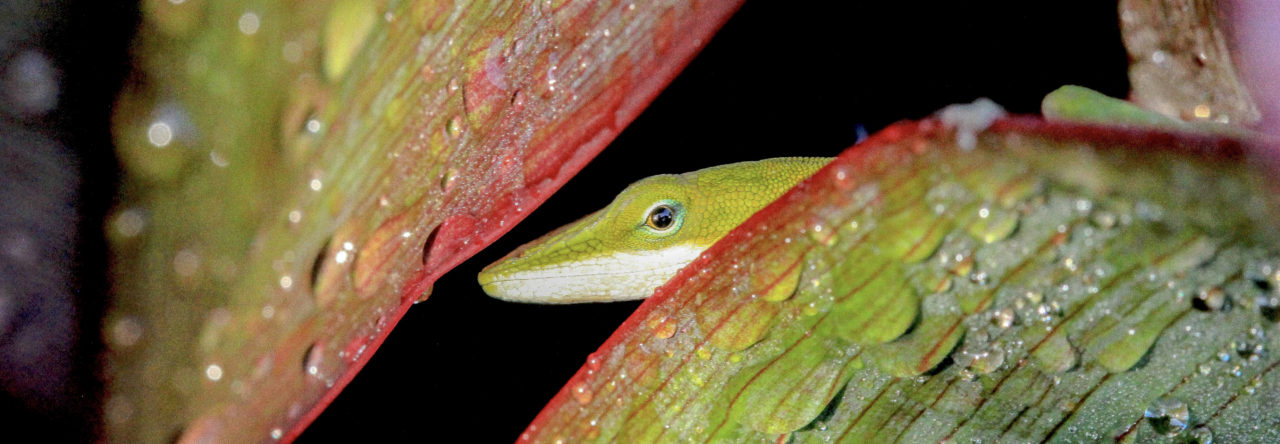Last week, I wrote a post on how the new classification for anoles proposed by Nicholson et al. 2012 might affect long term taxonomic stability for this group. That post generated some discussion, including, most recently, commentary by Kirsten Nicholson herself, explaining some of the reasons her group decided it was time to split up the anoles. Because that conversation is quickly becoming buried in the depths of Anole Annals, I wanted to continue it here on the main page. Also, I wanted to write some more to expand on some of the thoughts that prompted me to post last week, and I hope folks will continue to weigh in (note, the rest of this post will make a lot more sense if you first read my previous post, and the ensuing commentary). I’d like to make several general points:
1 – I think we can all agree that taxonomies should reflect accurate phylogenetic knowledge (I don’t think anyone here would disagree with this – let’s take it as a given that Linnean taxa should not be paraphyletic or polyphyletic).
2 – Beyond accuracy, I’m pretty sure there aren’t any rules governing the type or level of phylogenetic information that “should” be included in a binomial classification. Whether binomial names should reflect deep phylogenetic knowledge or shallow phylogenetic knowledge is a matter of opinion – I’d propose it’s completely subjective.
3 – The amount of phylogenetic information you can communicate in a binomial classification is trivial. It’s hard enough to represent phylogenetic structure across the depths of the entire Linnean hierarchy, and there’s almost no such information in Genus+species epithets. The goal of communicating finely resolved phylogenetic information probably should not be our main concern when dealing with genus names (so long as they are not phylogenetically inaccurate).
4 – Given that no one’s to say who’s right about what the appropriate phylogenetic scale of a genus is, and that Latin binomials are ineffective at communicating much of anything about phylogenetic information anyway, issues of stability are comparatively very important. It’s no small thing to propose a change for 88.6% (n = 343) of the scientific names of a group of species studied by thousands of people.
Since I think we can all agree that Linnean names should be applied solely to monophyletic groups, I’ll start with my second point, which is that there’s no “right amount” of phylogenetic knowledge that should be expressed in binomial names. Kirsten suggested we might all agree that “our classifications should mirror our phylogenetic knowledge.” I certainly agree with this statement in general, but I suspect I might disagree on some of the details. What sort of classification, exactly, would mirror our knowledge best? Should we assign genera to the smallest phylogenetic units about which we can be reasonably certain of monophyly, and continue to split them up into additional genera as we work towards resolving the entire bifurcating history of anoles? If so, we’ll probably eventually end up with a taxonomy that’s as finely parsed as that of the non-avian dinosaurs, where the genus:species ratio is 1:2 (I’m not even kidding – check it out…)! At this point, we’d have all sorts of cool binomials, like Nicholsonolis annectans and Mahlerolis gorgonae, but the genera would be functionally equivalent to species names (as they are in dinosaurs). This sort of reasoning (taxonomy should reflect ever-improving phylogenetic knowledge) is implied in the very title of the Nicholson paper, which seems to suggest that periodically, when the progress of systematics has advanced enough, “it is time” to reclassify everything (I think this contradicts the founding purpose of Linnean classification, but that’s another point). Anyhow, if this isn’t what it means for a taxonomy to mirror phylogenetic knowledge, then what exactly does that mean? Why 8 genera, and not 60, 16, or 4?
My main point here is that it’s a matter of opinion what kind of phylogenetic knowledge should be in a Latin name. One person might think that a genus should apply to the MRCA and all descendants of any two species similar enough to be confused by an experienced herpetologist (e.g., Anolis fraseri and A. biporcatus; see Williams 1966 for details). Another person might maintain that a genus should have 20 species max, no exceptions. Both are entirely matters of opinion, and such opinions abound when it comes to systematics. But since there are no official guidelines on the matter, I don’t think that such opinions can suffice to justify a disruptive taxonomic change.
I next wanted to criticize the logic of amending genus names to reflect systematic developments. The reasons are that (a) there’s very little phylogenetic information in Latin binomials, and (b) any change in the names of genera will result in a gain of some phylogenetic information (shallower information) at the expense of other phylogenetic information (the deeper stuff).
Linnean binomials contain next to no phylogenetic information. When we look at a list of scientific names, all we know is that congeners are more closely related to one another than they are to members of other genera, and other than that, they don’t tell us anything about phylogeny. To illustrate this, I created “binomial phylogenetic trees” for the Iguanidae (or Iguania, depending on who you follow..). I included all species in “Iguania” from the Reptile Database. Here’s what the traditional classification looks like, with Anolis highlighted in red:

Binomial “phylogenetic tree” of iguanian genera, following the traditional classification.
Read More









